
JANUARY-MARCH 13
QUARTERLY NEWSLETTER OF THE LANDSCAPE OBSERVATORY OF CATALONIA - 36
Modern presses, industrial landscapes
The Landscape Observatory defines its roadmap for the next few years: CATPAISATGE 2020
Industrial landscapes, the stars of a new Observatory website
New items on the Observatory website
The Flemish Government furthers its interest in the Landscape Observatory and its work
Olot's landscapes of yesterday and today
Loss in the landscape community
Contest to redesign deteriorated public spaces
The Landscape Catalogues, an example of innovation in Public Administrations
Guía d'integració paisatgística de les estacions d'esquí alpí d'Andorra
Iniciativa latinoamericana del paisaje (LALI)
Los paisajes fluviales en la planificación y gestión del agua
La mise en scène du monde. Construction du paysage européen
La Huerta de Valencia. Un paisaje cultural con futuro incierto
Ruinas modernas: una topografía de lucro
Valoración subjetiva del paisaje por atractores

Modern presses, industrial landscapes
Joan Roca i Albert
Director of the MUHBA (Barcelona History Museum)
When industrialisation spread throughout Europe in the 19th century, transforming both country-sides and cities, concern grew over the blurring of our most deeply-rooted identities. This apprehension was spawned by the Romantics and served to nourish an interest in preserving the very elements which were thought to identify collective groups. This is how the historic heritage concept began to progressively expand. The cultural landscape notion would later be incorporated into the operational framework of conservationism, introducing an additional degree of complexity by changing from a focus on isolated elements to the relation between these elements.
MOSAIC
The Landscape Observatory defines its roadmap for the next few years: CATPAISATGE 2020

Eight years after its creation, the Landscape Observatory is embarking on a new stage and has defined a new roadmap for the next few years called CATPAISATGE 2020. This new strategy is called, País, paisatge, futur ("Country, landscape, future"), and is based on ten general lines of work: internationalization; living and producing in a quality setting; landscape, creativity and strategic sectors; landscape and the local world; creating new landscapes of reference; landscape, citizenry and values; landscape, employment and entrepreneurship; climate change, energy and landscape; research as an increasingly important value; and landscape, education and communication.
Presentation of the book, Catàleg de paisatge. El Camp de Tarragona (Landscape Catalogue. Camp de Tarragona')

On December 19th of last year, the book dedicated to Camp de Tarragona landscape catalogue was presented in the Tarragona Port's auditorium. Lluís Recoder, then acting Catalan Minister of Territory and Sustainability, presided over the event with presentations by Joan Pedrerol, President of the Tarragona Chemical Business Association (AEQT) which contributed 40,000 euros for this catalogue's edition, Josep Andreu, President of the Tarragona Port Authority, Josep Oliveras, Professor in the Geography Department at Rovira i Virgili University, and Joan Nogué and Pere Sala, Director and Coordinator, respectively, of the Landscape Observatory. The catalogue was written by the Landscape Observatory and approved by the Government of Catalonia in May 2010. The catalogue is technical in nature and defines the types of landscapes in Camp de Tarragona, their value, state of conservation, the quality objectives they have to meet and proposals to achieve them. Those interested can consult the Catàleg de paisatge. El Camp de Tarragona on the Observatory's website
Industrial landscapes, the stars of a new Observatory website

The Landscape Observatory has created a new website dedicated to industrial landscapes. Designed like an online dossier, the website centres on landscapes arising as of the Industrial Revolution, including manufacturing areas as well as new communications channels, residential areas for workers and related infrastructures. This compilation of information, initiatives, entities, articles and work aims to spread information about the existence of these industrial landscapes as well as their diversity and special emphasis on Catalonia. It aims to become a reference on the industrial landscape topic for specialised individuals as well as the public at large. Like the rest of the Observatory's dossiers, this one is also available in Catalan, Spanish, English and French.
New items on the Observatory website
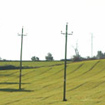
The Observatory's website has been expanded to include several new sections in the last few months. Firstly, we've created a section dedicated to the primary reference documents existing in the landscape field and prepared and promoted by Catalan institutions and entities, those from the rest of Spain and Europe or around the world. The eighty plus documents are ordered chronologically and classified by different topics. Secondly, we've renovated the section dedicated to our landscape catalogues with a new image and search engine which will make it easier to consult the content of documents prepared by the Observatory. And, lastly, we've updated the documentation centre's catalogue which now includes a total of 1,767 documents.
The Flemish Government furthers its interest in the Landscape Observatory and its work
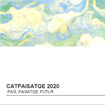
The Flemish Government continues to be extremely interested in the Landscape Observatory's work. After presenting a proposal in May 2012 to Vice President Geert Bourgeois, a new delegation led by the Secretary General for the Department of Public Governance decided that it wanted to return in November and learn first hand about the main landscape-related projects and policies in Catalonia. Amongst other questions, participants discussed the Observatory's structure and organisation, the landscape catalogues and the introduction of landscape into territorial planning initiatives as well as a topic in classes taught at the high school level.
Olot's landscapes of yesterday and today
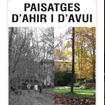
The Landscape Observatory of Catalonia, in collaboration with the County Archive of La Garrotxa, have prepared a photographic dossier called Paisatges d'ahir i d'avui distributed as a Christmas supplement in the local magazine, La Comarca d'Olot. The dossier included old and recent photos of the area, allowing readers to compare and contrast the changes in the city of Olot's landscapes over the last one hundred years.
Loss in the landscape community
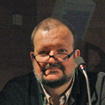
The recent death of Ignacio Español Echániz represents a great loss for landscape scholars and enthusiasts. Español was a Professor in the School of Civil Engineering at the Polytechnic University of Madrid and an expert in landscapes and infrastructures for the European Union. He authored numerous articles and books about landscapes, amongst which Manual de ecología del paisaje (2006), El paisaje. De la percepción a la gestión (2009) and Obras públicas en el paisaje (1998) stand out. His document Infrastructure and landscape: roads can be consulted on the Observatory's website.
The Involvement with Granollers' Landscape Plan concludes, emphasising the improvement of public spaces

Last October, the city of Granollers (Barcelona) launched a participatory initiative called the Involvement with Granollers' Landscape Plan, inviting local citizens to debate on proposals to improve the quality of the city's landscapes. The highpoint of this process occurred in November and December when the focus was on the plan's landscape objectives. For this, various sector-specific workshops were organised (associative, agricultural, educational and the business community), and the group fomenting this initiative within Town Hall and the civic centres took part. At the same time, consultations with citizens continued and work was done with the Children's Council. Worth noting amongst preliminary results was the interest in protecting the Pla de Palou landscape, improving the public spaces in neighbourhoods and encouraging the educational use of landscape to guarantee they are valued by all. Participation by citizens was very important to find the best landscape intervention and improvement strategies for Granollers.
Narbonne's Local Urbanization Plan: an example of landscape objectives being introduced in urban planning
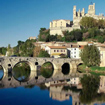
Last December 2012, the city of Narbonne invited the Landscape Observatory to visit and learn first hand how the French city was introducing landscape objectives into the revision of its urban planning initiatives. Narbonne's new Local Urbanization Plan (PLU) has taken four years to prepare. It applies new French legislation in this area and applies new instruments related to landscape. It is a reference in France today in terms of its inclusion of landscapes in urban planning. The visit is part of the Landscape Observatory's new line of work, "Landscape and the local world" included in its CATPAISATGE 2020 strategy.
Contest to redesign deteriorated public spaces

The Catalan art and design association, Foment de les Arts i el Disseny (FAD), has organised the third edition of the contest, Racons Públics, a contest which aims to involve citizens in the redesign of deteriorated or poorly valued public spaces in the city of Barcelona and its metropolitan area. Specifically, FAD aims to recuperate twelve spaces in six local municipalities based on proposals presented by contest participants. After the initial selection, citizens will have a month to vote on their favourite designs via Internet.
The Landscape Catalogues, an example of innovation in Public Administrations
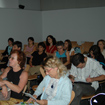
The Government of Catalonia's School of Public Administration selected the Observatory's Landscape Catalogues as an example of innovation as detailed in a recent report. This document, Els motors de la innovació a l'administració pública ("Innovation Drivers in Public Administration"), gathers the results of research carried out by a team in the Public Policies and Government Institute (Institut de Govern i Polítiques Públiques, IGOP) at the Autonomous University of Barcelona (UAB) and led by Quim Brugué. Their report specifically analyzes four case studies. As regards the Landscape Catalogue, the report identifies the impact of citizen participation as their most positive element.
THE CHOICE
Guía d'integració paisatgística de les estacions d'esquí alpí d'Andorra
Guide published by the Government of Andorra in order to define a landscape integration strategy for Andorran ski resorts.
Iniciativa latinoamericana del paisaje (LALI)
Declaration of ethical principles to encourage recognising, valuing, protecting, managing and planning Latin American landscapes by promoting projects and agreements; signed in Medellin (Colombia) on 19th October 2012.

The primary objective of this foundation is to propose,
gather and implement initiatives
to recuperate and restore the eastern foothills
of Bogota (Colombia).
 | Los paisajes fluviales en la planificación y gestión del agua Zoido, Florencio (dir.). Sevilla: Centro de Estudios Paisaje y Territorio; Universidad de Sevilla, 2012. ISBN: 978-84-695-2039-0.
|
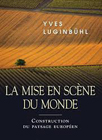 | La mise en scène du monde. Construction du paysage européen Luginbühl, Yves. Paris: CNRS Éditions, 2012. ISBN: 978-2-271075017.
|
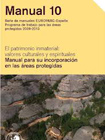 | El patrimonio inmaterial: valores culturales y espirituales. Manual para su incorporación en las áreas protegidas Mallarach, J.M.; Comas, E.; Armas, A. de. Madrid: Fundación Fernando González Bernáldez, 2012. ISBN: 978-84-937703-9-7.
|
 |
López, Ignasi. [Barcelona]: Bside Books, 2012. ISBN: 978-84-615-655-9.
|
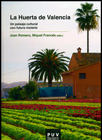 | La Huerta de Valencia. Un paisaje cultural con futuro incierto Romero, Juan; Francés, Miquel (eds.). València: PUV, 2012.
|
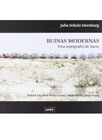 | Ruinas modernas: una topografía de lucro Schulz-Dornburg, Julia. Barcelona: Àmbit, 2012. ISBN: 978-84-96645-14-1.
|
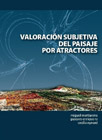 | Valoración subjetiva del paisaje por atractores Martiarena, M.; Re, G.E.; Eynard, C. Córdoba (Argentina): EDUCC-Editorial de la Universidad Católica de Córdoba, 2012. ISBN: 978-987-626-200-2.
|
Publications can be found in the documentation centre of the Landscape Observatory. | |
AGENDA
LANDSCAPE IN THE PRESS
![]() Nota: This newsletter is an initiative of the Landscape Observatory. If you wish to subscribe and receive it by e-mail please click here.
Nota: This newsletter is an initiative of the Landscape Observatory. If you wish to subscribe and receive it by e-mail please click here.
© 2024 Observatori del Paisatge / Hospici, 8 - 17800 OLOT - Tel: +34 972 27 35 64
http://www.catpaisatge.net / observatori@catpaisatge.net